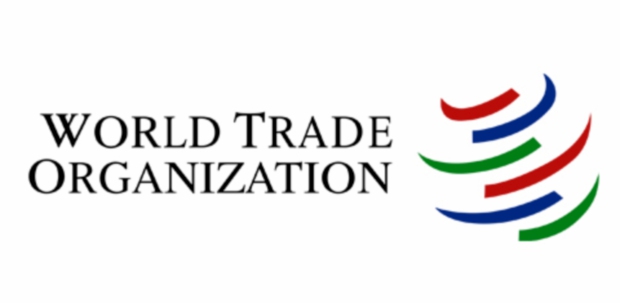It has been argued that free trade agreements (FTAs) emerged as catalysts for a borderless world, weaving intricate connections between nations.
Within this paradigm, these agreements arguably are not merely economic contracts but instead are threads that bind countries together, fostering a collective destiny.
This view proposes that FTAs transcend mere commerce, playing a vital role in preventing conflicts, simply because no two countries that are both part of a major global supply chain will ever fight a war against each other as long as they are both part of the same global supply chain. Proponents envision a world where shared economic interests, nurtured by robust free trade relationships, act as the linchpin for global stability.
The theoretical optics state that FTAs act as dynamic channels for technological diffusion and innovation. These agreements serve as conduits for the rapid exchange of ideas and advancements, propelling nations forward on the wave of progress. Embracing a market-centric worldview, FTAs are applauded for unleashing market forces on a global scale, where efficiency and innovation thrive amidst competition. According to this theoretical lense, these agreements are not just about transactions; they embody a philosophy of "competitive collaboration." Nations can simultaneously compete and collaborate, specializing in their strengths while benefiting from the expertise of others.
In the tapestry of this theoretical framework, free trade agreements are woven into the fabric of a connected, collaborative, and technologically vibrant global landscape. They signify more than economic partnerships; they herald the emergence of a world where the interplay of shared interests and collaborative endeavors shapes the course of nations.
Developments in the 21st Century
In recent years, there has been a tremendous increase in the number of Free Trade Agreements (FTAs), in which two or more nations agree to substantially reduce trade barriers.
Currently, much of the world is caught in an occasional frenzied effort to negotiate such agreements, join powerful regional trade blocs, or at least try to avoid being left out of such blocs as they coalesce in many regions around the globe.
FTAs are regarded as an efficient means of promoting growth in trade, opening markets, and reducing trade barriers. China's 2004 FTA with ASEAN can be cited as a benchmark. In four years, China-ASEAN trade had risen by at least 20 per cent annually.
Similarly, the United States and the European Union were showing steady interest in forming FTAs with countries throughout the region. For any nation relying on trade, free trade, economic integration, and market access are of utmost importance. And it goes without saying that the most desired markets to access are the largest ones.
While FTAs are generally viewed as economic pacts, their political significance is great. For example, looking back, with the United States reducing its military presence in South Korea and having to confront both rising anti-US nationalism and aggressive Chinese diplomatic efforts, it countered by offering South Korea an FTA, a pact more strategic than economic.
The same was true for many FTAs throughout the region. FTAs throughout Asia were becoming increasingly political as nations jockeyed for position.
Between 1997 and 2007, the number of FTAs rose from seven to 38, continually adding complexity to an already complicated system of international trade.
In the book History of Western Philosophy, Bertrand Russell predicted that western culture would eventually engulf and absorb all foreign cultures.
Whereas David Hanson, in his book Why The West Has Won claims further that the 20th century has seen an erosion of the cultural differences that impeded the adoption of a western outlook, stressing efficiency through capitalist property rights and the legal protection of capital accumulation.
By adopting a Western approach, Japan, and later Singapore, Hong Kong, Taiwan, and South Korea, moved from being among the poorest countries in the world to being among the wealthiest.
Proposed Malaysia-U.S. Free Trade Negotiations
Capitalism offers inducements sufficiently attractive to such a wide range of people that it appears to be a powerful weapon against extremism. Along those lines, former US Ambassador Christopher J. LaFleur praised Malaysia as "a predominantly Muslim country that advocates a moderate version of Islam, plays a very important role in maintaining security in Southeast Asia, and promotes a vision of the future of the Islamic world, one that emphasises cooperation, economic development, and political rights and freedoms."
On March 8, 2006, then US President George W. Bush announced that negotiations had begun with Malaysia for a free trade agreement. He noted that Malaysia is the 10th largest trading partner of the US, while the US is Malaysia's largest source of imports, and looked to a beneficial relationship for both parties.
America's status as Malaysia's largest foreign market and its primary source of investment for many years were incentives for a pact. An FTA would increase and diversify Malaysia's exports and stimulate investment in Malaysia. It is for this reason that the US aims to fast-track trade talks with Malaysia.
The United States hoped to bolster a moderate Muslim ally. An FTA with Malaysia appeared to have strong bipartisan congressional support because of Malaysia's dependability in the fight against terrorism and its tolerance and multiculturalism, and officials praised Malaysia as "a country that has been at the forefront of the economic dynamism that has transformed Asia in recent years."
In short, this trade pact can be viewed as strategic in supporting a Muslim country known for its tolerance.
After five rounds of negotiations, talks were stalled, leaving no chance of an agreement in time to give the U.S. Congress the needed three months before the President's trade promotion authority (TPA), or "fast track," would expire. Each side had 'no-go' areas on which they would not move. Market access issues such as the entry of U.S. companies into Malaysia's protected finance, auto, and services sectors were discussed, but Malaysia refused to discuss affirmative action policies favouring Bumiputeras.
Since the TPA has long expired, any enabling legislation would have to go through open-ended congressional consideration. In the current scenario, economic nationalists who are influential in the administration of President Biden are bringing many changes to American trade policy. For example, the Biden Administration has focused on "a worker-centred trade policy that fosters inclusive prosperity" and not on restarting pending talks or new FTAs.
The use of FTAs reflects political and economic wants. The prevailing current belief is that freer trade among countries brings economic benefits.
The United States, in particular, stresses free trade as an effort to shape the world into a rational, western image. Capitalism is seen as a key to countering Islamic extremism. As such, it can be argued that FTAs can at times be a tool (the metaphorical or proverbial carrot) of foreign policy.
Jockeying for Economic Leadership in East Asia
In the realm of international strategy and diplomacy, competition is usually a negative paradigm. Whether jostling over territory, contesting freedom of navigation or engaging in an arms race, strategic competition tends to be risky and counterproductive. In other domains, however, competition should be welcomed. For example, in a market economy, competition leads to innovation and efficiency. Therefore, what should be avoided between China and the United States is to be encouraged between Apple and Samsung.
Whereas in other areas, competition is neither wholly good nor bad but is instead a delicate scenario to be managed. Asian trade diplomacy is one such area where there are competing agendas for trade liberalization, as manifested by the emergence of a "noodle bowl" of free trade agreements in East Asia.
Is the United States losing to China in the long-term geopolitical competition in East Asia? Are smaller states in Asia tilting towards China for economic benefits at the expense of US interests? Are Biden's external policies creating more room for China to expand its influence in Asia?
We have to thank Japan for being the counterbalance between the rising dragon China and the USA, which do not want to be knocked off their perch.
There is no reprieve for Malaysia; sooner or later, we will have to formulate our big power policy. Undoubtedly, it will be driven by domestic political necessity, especially economic gains. We cannot afford to be a hermit nation.
In the final analysis, against the backdrop of an unfolding global landscape, change is inevitable, unrelenting, and overarching. Like the smart proverbial mousedeer (kancil), an open economy like Malaysia must learn to dance along with the behemoths of the international trading system while making the required structural transformation in government and economy. In this context, the proverbial Malay sang kancil, or mousedeer, is known for its agility and wit. Strategy and timing are of essence, and as we dance along the goliaths, we must be careful not to get trampled by them. Instead, we ought to play according to the accepted rules and reap the maximum number of benefits.
*The writer currently serves as a senior consultant at Global Asia Consulting (GAC) and has a background as a senior researcher at the Malaysian Institute of Economic Research. The viewpoints articulated are solely those of the author.





